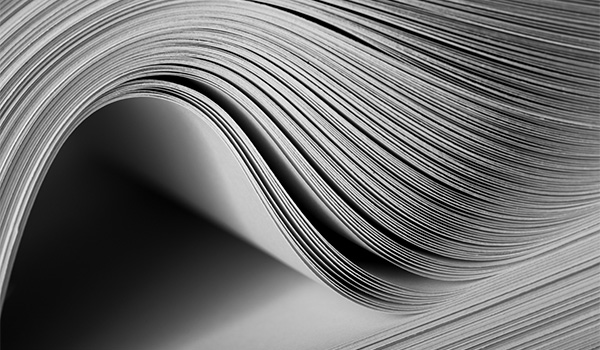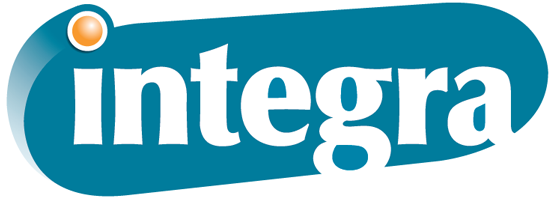Best Paper Types for Your Next Print Job
October 14th, 2023 | 5 min read

If your company has ever printed anything, anything at all, then you likely know just how many decisions go into the process. What feels like it’ll be a quick, simple process can become hours of divining over colors, embellishments, size, pricing and our namesake here — PAPER.
Here at Integra, we’ve watched and helped customers come to their final decisions on print specs galore, and we’ve noticed that paper tends to be a big time sink for people. Afterall, there are tons of characteristics to consider, and it can be tough to decide.
Still, we know our customers are busy people running growing businesses, which is what led us to write this post and hopefully save the next guy a few minutes… or hours… or days!
-1-1.jpeg?width=500&height=333&name=AdobeStock_27028928%20(1)-1-1.jpeg) Below, check out the top four categories of paper (sorted by coating), what they’re great at, what they’re not so good at and a few products you’ve probably seen or felt yourself that will hopefully give you a tactile frame of reference. You’ll also find information on the subcategories and qualities available under each “paper umbrella,” if you will.
Below, check out the top four categories of paper (sorted by coating), what they’re great at, what they’re not so good at and a few products you’ve probably seen or felt yourself that will hopefully give you a tactile frame of reference. You’ll also find information on the subcategories and qualities available under each “paper umbrella,” if you will.
While this is by no means an exhaustive list of all paper types and traits — let’s be honest, who has the time to read about wood types and processing methods? — it should cover the primary options at your fingertips that change form and function, and what you can expect out of each kind of paper. If you read through this article and still don’t feel you’ve landed on the options that suit your project needs, reach out to your printer to learn more and discuss niche paper qualities.
Our hope is that you’ll start to lean one way or another on a paper category by the time you’ve read about all four. You and your print management expert will be able to fine-tune it quickly and easily from there!
1. Paper Types With Low Coating: Mattes
When you select paper types out of the gate, before adding protective finishes post-print, you’re generally selecting what kind of coating your paper will have.
First up is a low coating option that gives the page a thin coat with no gloss. It’s a great paper type for projects that would benefit from:
- Lack of light glare: We’ve all seen or read magazines and catalogs with high gloss and noticed the light glaring off those glossy spots. Ever tried to take a picture of something on paper with a high-gloss coating and noticed the spots where light bounces back? With matte paper, your customers won’t see this notorious glare. They could read it in full sun without any visual disturbances.
- Full coverage without gloss: A matte coating will cover the entire page, giving it a slightly more substantial (weighty/thick) feel than unfinished paper. But it’s subtle, and it won’t add gloss.
- Extra ink longevity: While it’s the lowest level of coating available, matte paper will still help your ink hold out than it would on uncoated paper.
- A smoother surface: If you had a piece of matte paper and a piece of uncoated paper in front of you, you’d be able to feel a rougher texture in the uncoated pieces and a smoother one in a matte-coated variety. This difference is subtle as well, but definitely noticeable. Keep in mind that some mattes, while bearing a lighter coating than, say, 70-pound gloss pages, will feel a bit bulkier.
Note: At Integra, we often chat with customers who ask for uncoated paper but actually want matte. Once they see and feel the difference, they realize they’d been imagining matte-coated paper all along. It’s an easy mistake to make with this low coating level — many people don’t realize matte paper has a coating at all unless they’re comparing against uncoated sheets.
If you’ve ever flipped through a catalog that didn’t have a glossy look but also didn’t seem rough to the touch or have noticeable pulp like you’d see in most newspapers, you were probably holding a low-coated piece. If that’s the look and feel you’d like for your own catalog, pamphlet, magazine or booklet, you’re ready to start exploring mattes.
2. Paper Types With a Medium Level of Coating: Silks and Dulls
The most common current paper type falls within either silks or dulls, which both fall under a medium level of coating. The difference between them is minute enough that you’d probably have to sit down with each one and compare them side by side to make a decision, so we won’t try to differentiate here. When you’re ready to discuss paper types and make a selection, if you think medium gloss is going to be the best fit, you can request samples from your Integra representative or other printer to properly assess the difference.
As many things middle of the road do, a medium level of coating on paper offers the best of both worlds. . Silks and dulls are glossier than matte but have less sheen than paper with a high level of coating. It’s popular for having a little bit of a glossy look without overdoing it. There’s still no glare, but there’s full coverage, a bit of sheen and extra ink longevity.
Today, most physical company catalogs and pamphlets have either dull or silk pages. You should be able to notice the gloss, but not enough to see light glare.
3. Paper With a High Level of Coating: Glosses
Gloss is the highest level of paper coating aside from cast coated pages, which are too specialized to make sense in these categories. That said, you should consider cast coating if you want even more coating than gloss pages offer.
You’ll notice the sheen right away with glosses, and some companies still like it for its commercial feel. If you ever received a Sears catalog in the past, you probably remember the shiny pages, light glare and formal commercial essence of the piece. These pages have extra full-coverage coatings, and the ink is even better protected, allowing it to last longer.
Lots of other companies use glosses for their commercial brochures. It’s also a popular category for flyers thanks to their extra resistance to damage.
4. Uncoated Paper Types
Last but not least, we have our uncoateds. Now, this may sound like a fairly straightforward category, and in some ways it is, but “uncoated” is not always as simple as it sounds.
In fact, certain designers make the artistic choice to print on high-end uncoated paper at a premium price — much pricier than any of the first three categories — because it makes the images and ink pop in a way that adds visual interest and clarity without any coating effects. The ink sinks into the fibers of the paper well, but most designers who choose this route avoid protective finishes, which would detract from the aesthetic.
That’s an edge case, but it does speak to the variety of uncoated grades available. Others include off-set and opaque, which you can learn more about if you select an uncoated paper.
Some of the more practical uses of uncoated paper include:
- Forms: It’s a lot easier to write on uncoated paper, so if you have something for your customers to fill out, it’s likely a great choice.
- Workbooks: In the same vein as forms, workbooks contain several pages — sometimes all of them — that encourage active participation. Whether it’s a business coaching workbook or a crossword puzzle book, uncoated paper is a great choice that will allow for easier writing, and the ink or pencil lead will more readily bond with the page.
- Newspapers: Uncoated paper a classic choice for any kind of traditional newspapers, especially ones published at a frequent cadence.
- Coloring books: Just as writing is easier on uncoated paper, crayons and markers will work better on paper without coating.
- Books and booklets: Hardback books have special covers, of course, and paperback books usually have thicker, coated paper covers. The pages inside, however, tend to perform well uncoated. Most books you pick up off the shelf today will have uncoated paper inside.
Even in the increasingly digital world, uncoated paper that people can write on remains steadfast as a classic choice that offers a visceral tactile experience.
Put Your Paper Choices Together for the Perfect Printed Materials
If you’re like many readers on this particular blog post, you may have shown up with the feeling that “paper is paper.” Sure, you’ve felt different kinds, but who knows which is which? Hopefully now, you have an idea of how each one would fit into your project.
So what’s next? We’re certainly hoping you feel well-armed to make your primary paper decision, but you may also want to look into paper finishes, which are coatings put on paper after the initial printwork is complete. Finishes add protection and resistance — coming in at different levels just like the coatings in this post did — but they can change the final feel and weight of the page.
If you just came from reading about finishes and how they affect the aesthetic and function of the above paper types, you might be ready to get started on your print project. At Integra Graphics Synergy, we could talk paper all day long, so even if you still have some details to work out, we’d be happy to work with you on them. Click below to jump into your next ink to paper printing project!
Topics:


